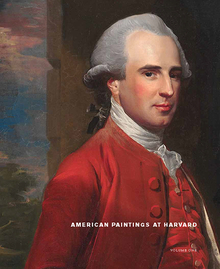The Origins of Graphic Design in America, 1870-1920
WARNING
You are viewing an older version of the Yalebooks website. Please visit out new website with more updated information and a better user experience: https://www.yalebooks.com

Read this book online via the A&AePortal, our art and architectural history eBook platform. To learn more about how to access this book, please contact us.
By the time the phrase "graphic design" first appeared in print in 1922, design professionals in America had already created a discipline combining visual art with mass communication. In this book, Ellen Mazur Thomson examines for the first time the early development of the graphic design profession. It has been thought that graphic design emerged as a profession only when European modernism arrived in America in the 1930s, yet Thomson shows that the practice of graphic design began much earlier. Shortly after the Civil War, when the mechanization of printing and reproduction technology transformed mass communication, new design practices emerged. Thomson investigates the development of these practices from 1870 to 1920, a time when designers came to recognize common interests and create for themselves a professional identity.
What did the earliest designers do, and how did they learn to do it? What did they call themselves? How did they organize them-selves and their work? Drawing on an array of original period documents, the author explores design activities in the printing, type founding, advertising, and publishing industries, setting the early history of graphic design in the context of American social history.
"This thorough investigation of the roots of graphic design in America opens up an area of study that has been much neglected. Thomson brings to the table a fresh account of design as a discipline interconnected with social change."—Peter Hall, associate editor, I.D. Magazine
"An example of a new direction for historical research in design. It is an engrossing book, an important addition to cultural history and graphic design literature and highly recommended for all."—Angelynn Grant, Communication Arts
"Throughout the book, Thomson skillfully handles the enormous variety of professions involved with the visual arts such as advertising, book publishing, typography, and printing, which is in itself one reason for the lack of cohesion among graphic arts professionals."—Julie Mellby, Art Documentation
"This volume is a major contribution tot he design history literature. It stakes out new territory by focusing on issues of professionalization and should remain a valuable source of information and insight for years to come."—Victor Margolin, Journal of Design History
"The Origins of Graphic Design in America 1870-1920 is an invaluable addition to any design history survey."—Steven Heller, Design Issues
Publication Date: August 25, 1997
51 b/w illus.








